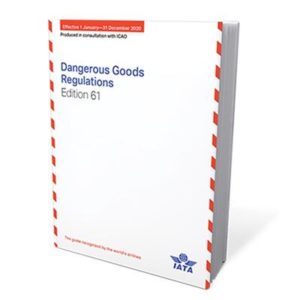The International Air Transport Association (IATA) released a new edition of its Dangerous Goods Regulations (DGR), the manual used by shippers, airlines, and hazmat carriers should be aware of the new changes to ensure the safe transport of hazardous materials.
Hazardous materials air shippers and hazmat carriers must comply with the new changes in regulations and features for the 61st Edition IATA DGR.
 CLICK HERE TO VIEW ADDENDUM TO THE 61ST EDITION (2020)
CLICK HERE TO VIEW ADDENDUM TO THE 61ST EDITION (2020)
CLICK HERE TO VIEW SIGNIFICANT CHANGES AND AMENDMENTS.
A mandatory compliance for IATA DGR starts on January 1, 2020.
Ensure your dangerous goods shipments will be accepted for transport on passenger or cargo airplane in the New Year, send an email to info@gohazmathub.io and a Hazmat expert will get back to you within minutes.
How many new changes in the 2020 IATA DGR (61st Edition)?
Many updates for the 61st edition DGR:
- Updates to the List of Dangerous Goods (section 4.2) for UN #s 3449, 3077, 3082, 2389, 3536, and 1700
- Updated packaging table entries that better identify composite packaging options
- Updates to packing instructions 650, 960, Y960, 968, and 970
- Added definitions for “aggregate lithium content” and “lithium batteries installed in cargo transport unit”
- Clarification about the placement of labels and markings on DG packages
- Revised recommendations for training hazmat employees
- Updates to provisions for dangerous goods carried by passengers and crew
- A new Appendix I that details changes taking effect January 1, 2021
See the full list of significant changes from IATA here.
Should I use the IATA manual?
The International Air Transport Association’s Dangerous Goods Regulations (IATA DGR) is the manual used by hazmat shippers, freight forwarders, brokers, and airlines to mitigate the risks posed by hazardous materials during air transport.
So, if you are part of this criteria then the answer is yes, you need to be aware of all the regulations and requirements of the IATA DGR.
The manual combines international hazmat regulations from the United Nations, the ICAO Technical Instructions or “TI,” with unique requirements and preferences of member airlines—including passenger airlines and major cargo carriers like UPS and FedEx.
All revised requirements take effect on January 1 of each new year.
DOT and IATA Hazmat Training
We can help your business develop a step-by-step approach to shipping hazardous materials safely and in compliance, by ground and air.
Contact our hazmat training experts fo further information of what trainings are available for business. Send us an email to info@gohazmathub.io and a Hazmat expert will get back to you within minutes.

